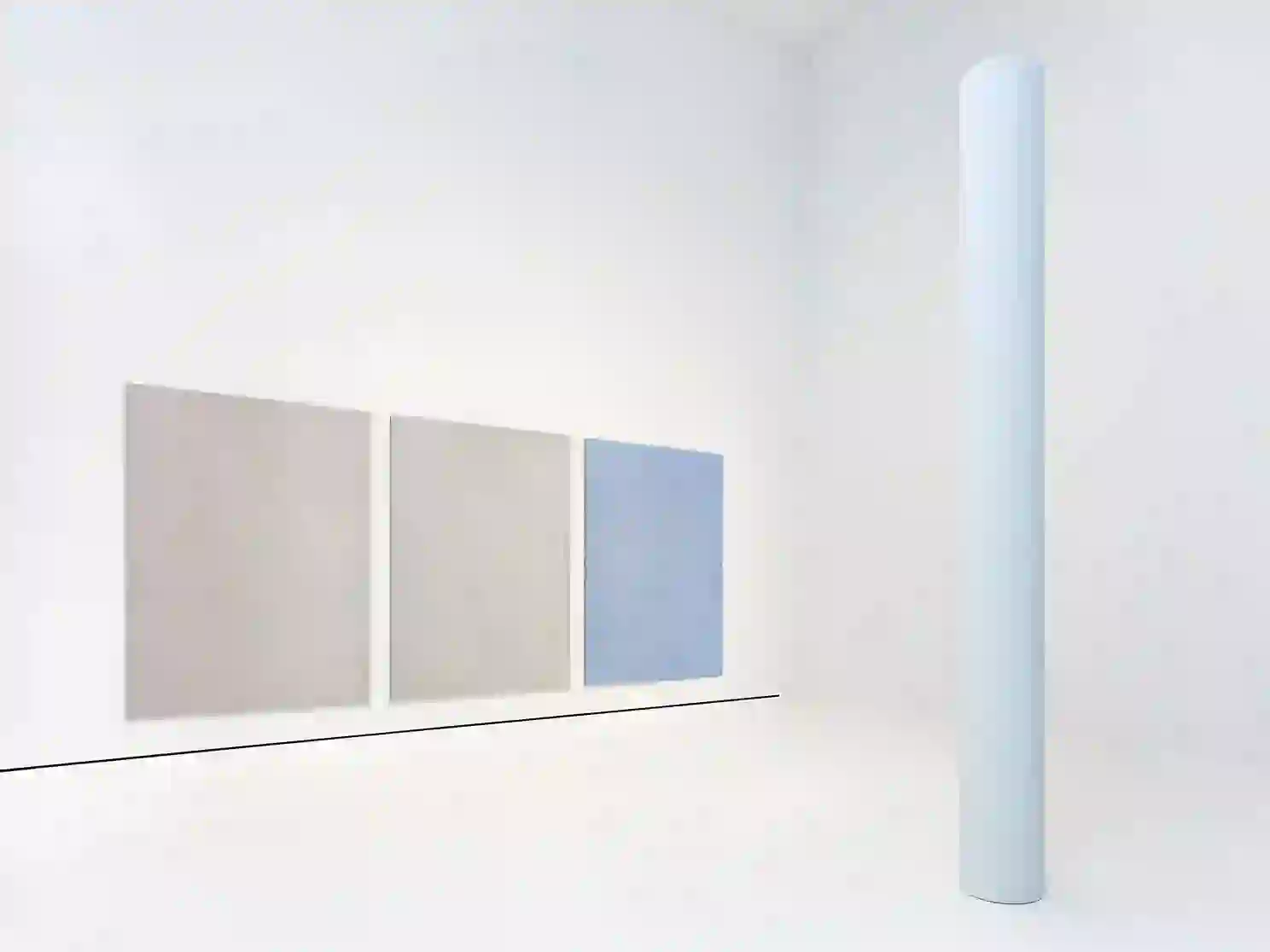On view through January 6, 2025, Ettore Spalletti: Parole di colore is specially conceived for the new pavilion by Fondazione Ettore Spalletti and Alberto Salvadori in collaboration with architect Alberto Campo Baeza. Featuring five works by Spalletti, the project is installed in Gallery 2, an isotropic room built as a perfect cube, in which each wall is punctured by a single square window. Set at different heights and positions, the windows admit shafts of light that cross through the isotropic gallery differently, hour by hour, in a space where color, light, and volume are in equilibrium.
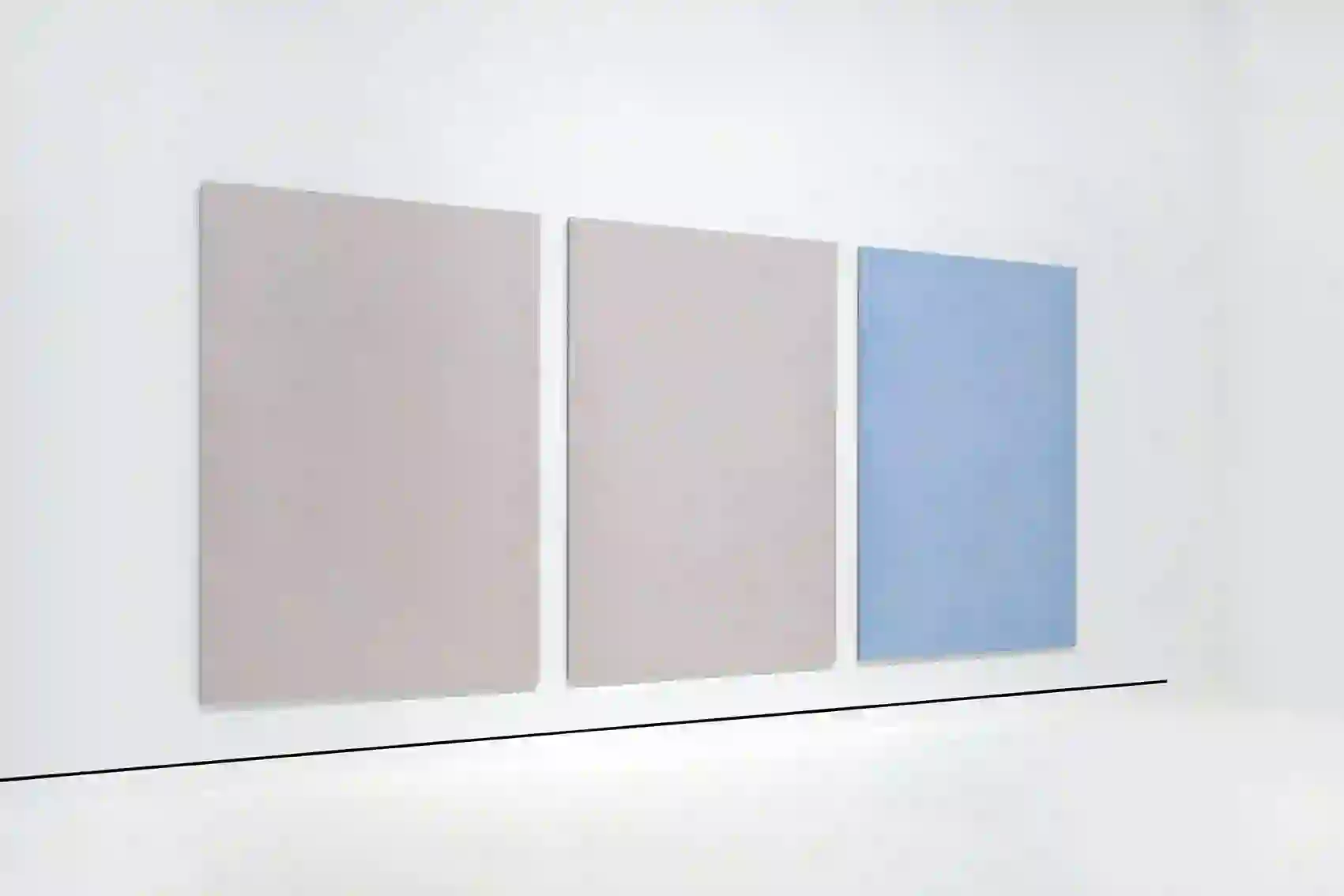
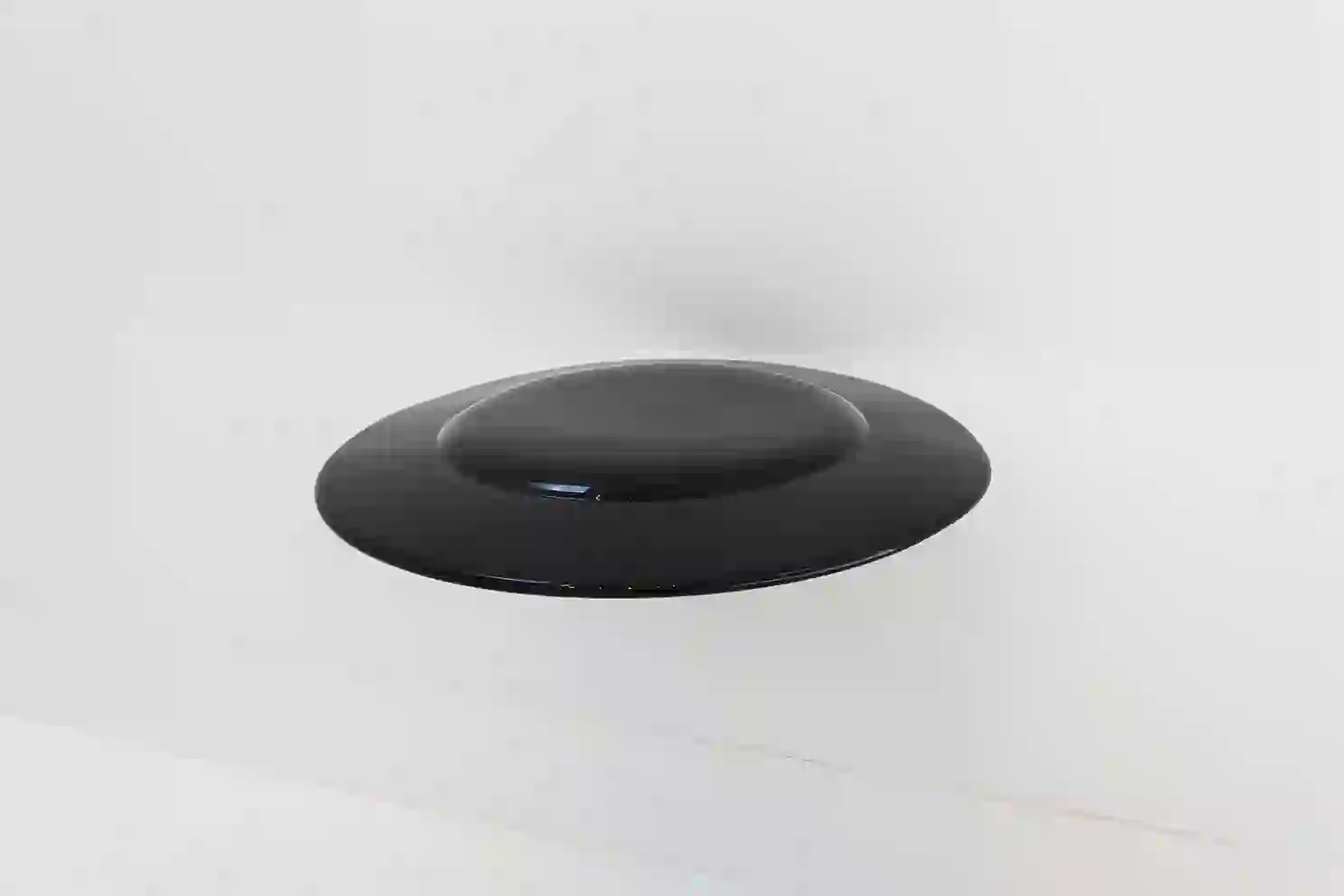
The exhibition features three large monochromatic wall pieces—Sia o no così, rosa; Così, rosa; Sia o no così, azzurro—painted in 2009 in densely layered color, ritually applied in the same manner at the same time of day. They are juxtaposed with the sculpture Colonna nel vuoto, 2019, a column built from a painted wooden frame. In dialogue with Campo Baeza’s isotropic gallery, the sculpture can be seen as a symbol, a possible source of reinterpretation and innovation in the relationship between art and architecture. Alongside the paintings and column is Disco, 1981, a piece created from black lacquered wood inserted into one of the walls. Disco introduces a magical and asymmetrical element to the space—a presence suggesting a sense of the sublime.
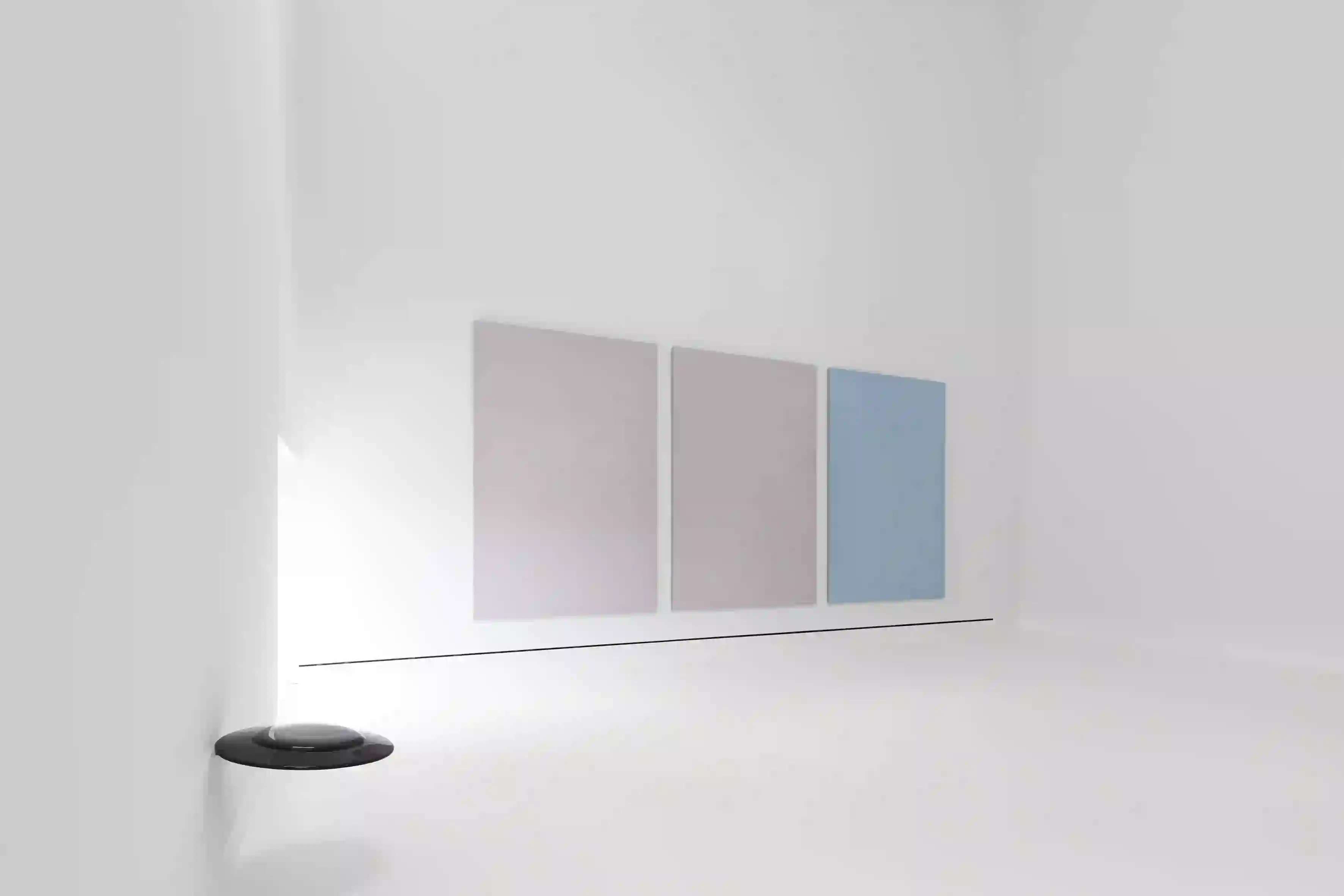
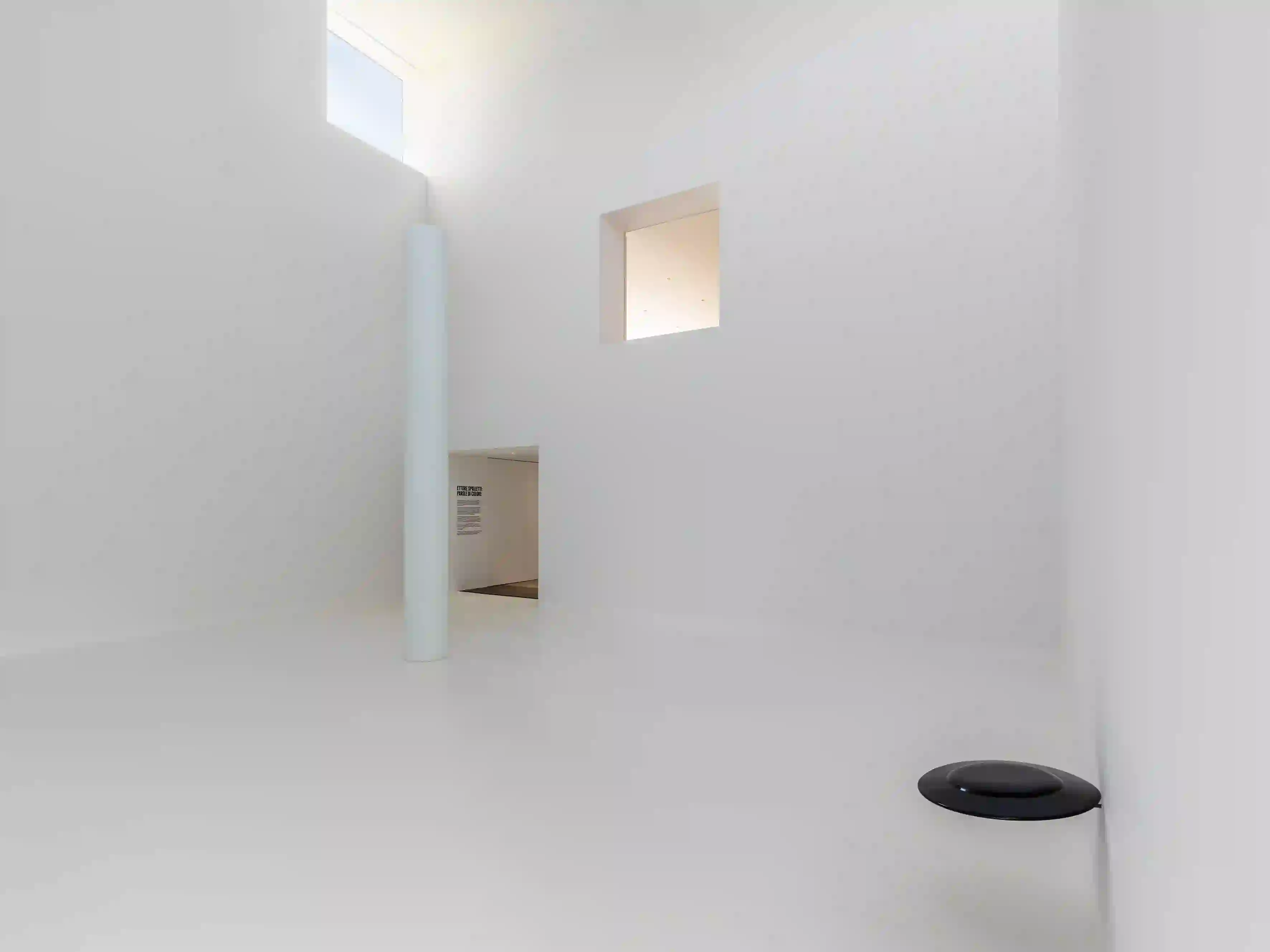
Parole di colore is a reflection on Spalletti’s work in relation to the cube designed by Alberto Campo Baeza; a space that feels like a sanctuary. As Spalletti explained, “In my work, there is always a desire to offer a space in which to feel good, in which to feel enveloped and somehow protected. The most important value for me is the gift.”
Generous support for Ettore Spalletti: Parole di colore is provided by Marian Goodman Gallery, Galleria Lia Rumma, and Vistamare.
Please be aware that this gallery is strongly lit.
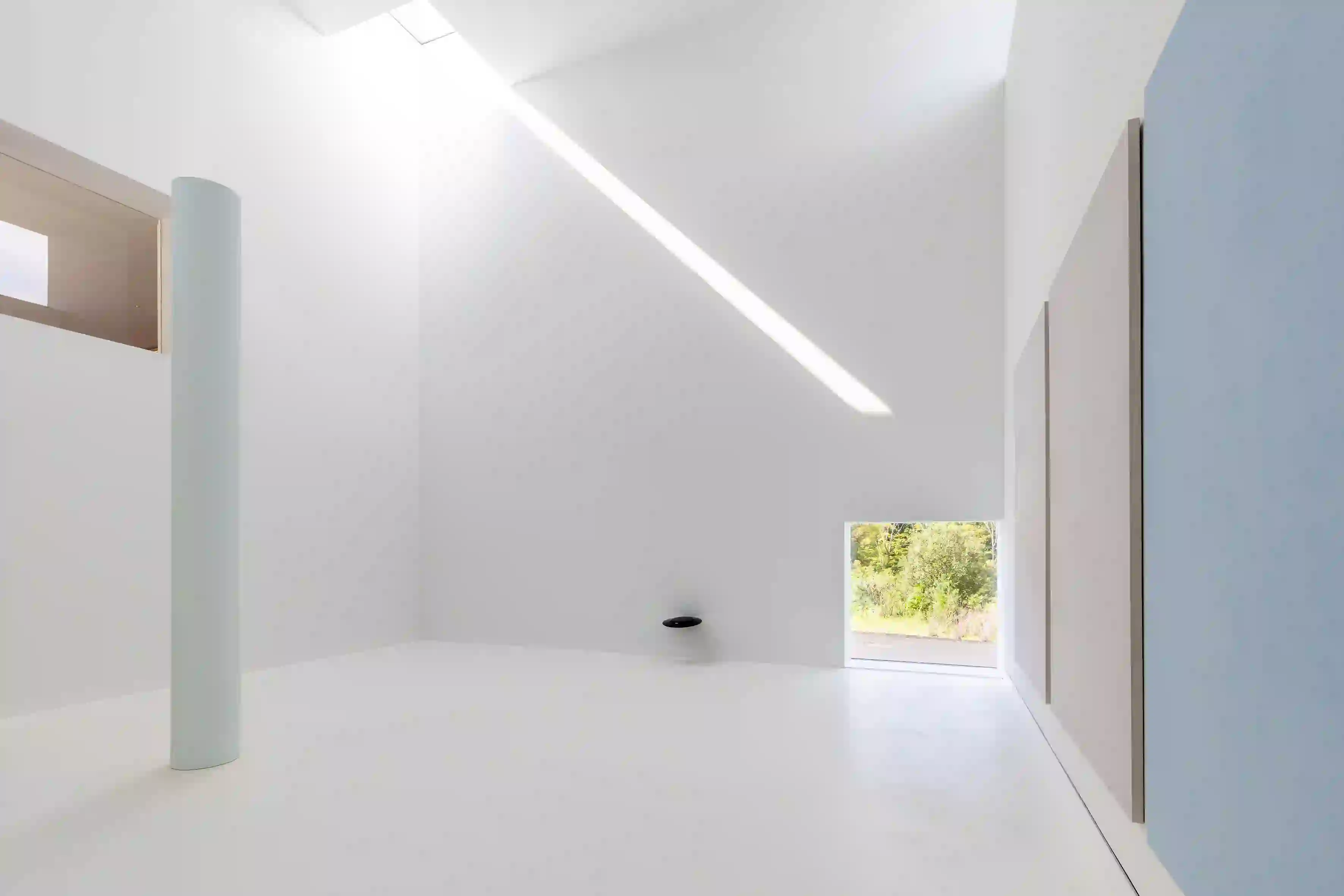
About Ettore Spalletti
Ettore Spalletti (1940-2019) was born in Cappelle sul Tavo (Pescara) where he spent his entire life. Important exhibitions have been dedicated to Spalletti at the international level over the past 40 years, most recently at the National Gallery of Modern and Contemporary Art in Rome (2021), the Nouveau Musée National de Monaco in the Principality of Monaco (2019), Palazzo Cini in Venice (2015) and a retrospective presented simultaneously in three Italian museums: MADRE, Museo d’Arte Contemporanea Donnaregina, Naples; GAM, Galleria Civica d’Arte Moderna e Contemporanea, Turin and MAXXI - Museo Nazionale delle Arti del XXI Secolo, Rome (2014). Other important solo exhibitions include: GNAM - Galleria Nazionale d’Arte Moderna, Rome (2010); Museum Kurhaus Kleve, Clevès (2009); Villa Medici, Académie de France, Rome (2006); Henry Moore Institute, Leeds (2005); Castello di Rivoli - Museo d’Arte Contemporanea, Rivoli - Turin (2004); Fundación la Caixa, Madrid (2000); Museo di Capodimonte, Naples (1999); Musée d’Art Moderne et Contemporain, Strasbourg (1998); MUHKA - Museum van Hedendaagse Kunst, Antwerp (1995); Guggenheim Museum, New York (1993); Musée d’art moderne de la Ville de Paris, Paris (1991); De Appel, Amsterdam (1989); Kunsteverein, Munich (1989); Portikus, Frankfurt (1989); Halles d’art contemporain, Rennes (1988); Museum Van Hedendaagse Kunst, Ghent (1983); Museum Folkwang, Essen (1982). Spalletti was invited several times to Documenta in Kassel (1982, 1992) and the Venice Biennale (1982, 1993, 1995, 1997). Permanent installations include Salle des dèparts (1996) for the Hôpital Raymond-Poincaré in Garches - Paris, and Cappella (2016) created together with architect Patrizia Leonelli for Villa Serena private clinic, in Città Sant’Angelo - Pescara.
About Fondazione Ettore Spalletti
The Ettore Spalletti Foundation was established on the initiative of Patrizia Leonelli Spalletti in 2022. The non-profit aims to protect and enhance the artistic production of Ettore Spalletti. Based in the artist’s studio in Italy, the Foundation promotes initiatives aimed at disseminating and raising awareness of the artist’s work.
About Alberto Campo Baeza
Alberto Campo Baeza is an Emeritus Head Professor of Design in the Madrid School of Architecture, ETSAM, where he has been a tenured Professor for more than 35 years. He has taught at the ETH in Zurich and the EPFL in Lausanne, as well as the University of Pennsylvania in Philadelphia, Kansas State University, CUA University in Washington and L’Ecole d’Architecture in Tournai, Belgium. More recently, he has been named the Clarkson Chair of Architecture by Buffalo University and Walton Critic Speaker at the School of Architecture and Planning of CUA, the Catholic University of America in Washington. From 2018-2019 he was a visiting professor at the School of Architecture of Barcelona, ETSAB. From 2017 to 2020 he was Emeritus Head Professor of Design. In 2021 he taught as Visiting Professor at the New York Institute of Technology and won the National Prize for Architecture.
About Alberto Salvadori
Alberto Salvadori graduated from the University of Pisa with a degree in Art History. He earned a postgraduate specialization in History of Modern and Contemporary Art of European Countries. He studied at Sussex University and Reading University. In 2001, Salvadori obtained a second level Master’s degree in Curatorial Studies at the Brera Academy of Fine Arts in Milan. From 2003 to 2009, he was the curator of the general catalogue of the Galleria d’Arte Moderna Palazzo Pitti in Florence. Since 2009 to 2016, he has been the Director of Marino Marini Museum in Florence, and from 2007 to 2020, the Director of OAC by Fondazione CR Firenze. Salvadori has served on boards at several institutions, including Istituzione Musei Civici Bologna, Polimoda Florence, Fondazione Ragghianti Lucca, and the Italian Council Committee Rome. Salvadori is the Founder and Director of ICA Milano, the Curator of Decades at MIART Milano, an editor of a series of books at Fondazione Marconi Milano, the curatorial consultant of The Olnick Spanu Collection, and a board member of Magazzino Italian Art Foundation and Fondazione Pomodoro Milano. Some of his curatorial project include: Giorgio Morandi, Marino Marini, Fausto Melotti, Giò Ponti, Pietro Consagra, James Lee Byars, Lynn Chadwick, Francesco Lo Savio, Mario Schifano, Radical Utopias: Architecture 1966–1976, Beyond Performances: Mario Garcia Torres, Cally Spooner, Opaviparà, Hans Josephshon, Simone Forti, Charles Atlas, Miriam Cahn, Liam Gillick, Andrea Zittel, Simone Fattal, Michael Anastassiades, Deimantas Narkevicius, Jonathas De Andrade, Silke Otto Knapp, Massimo Bartolini, Pablo Bronstein.
